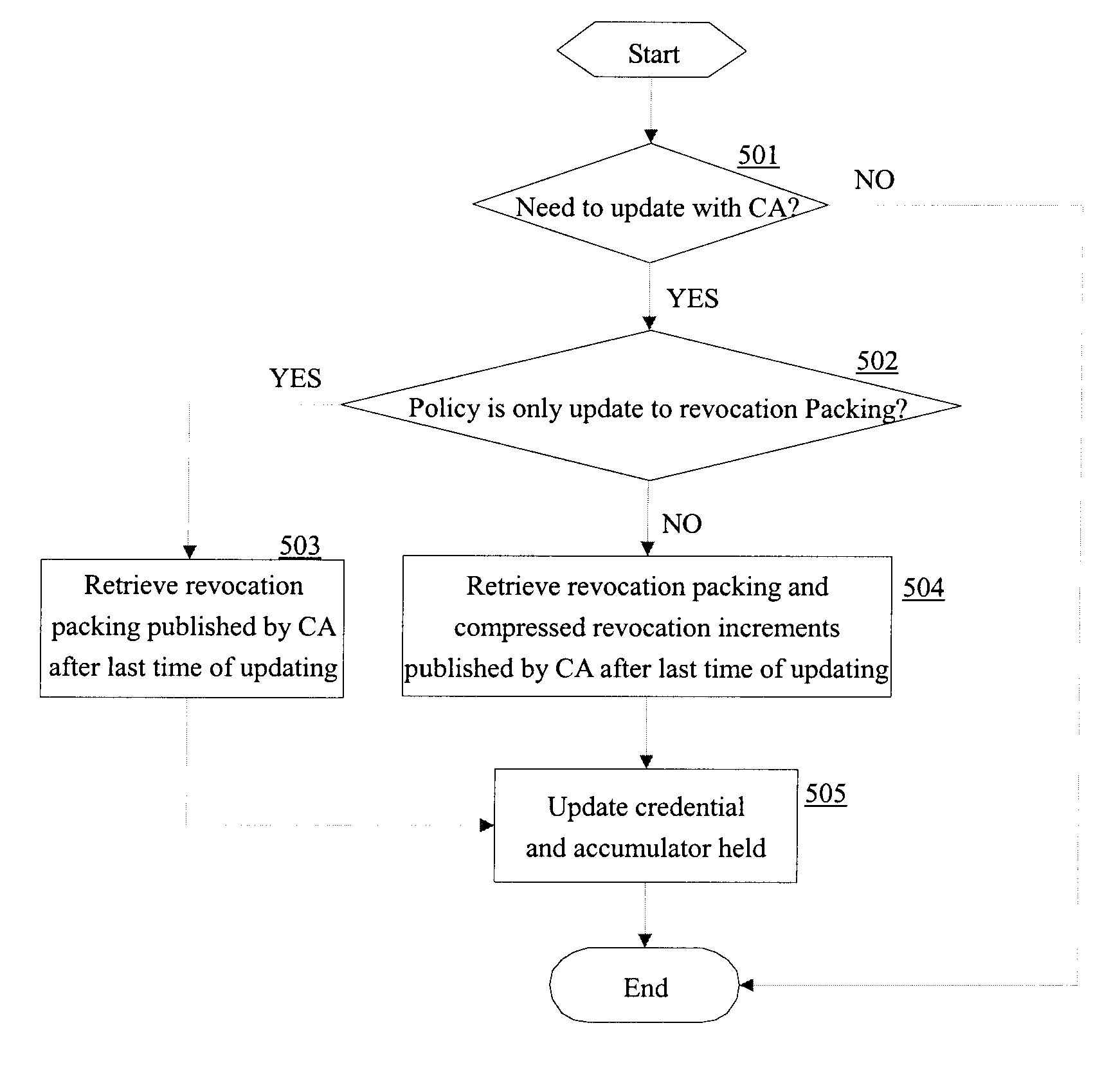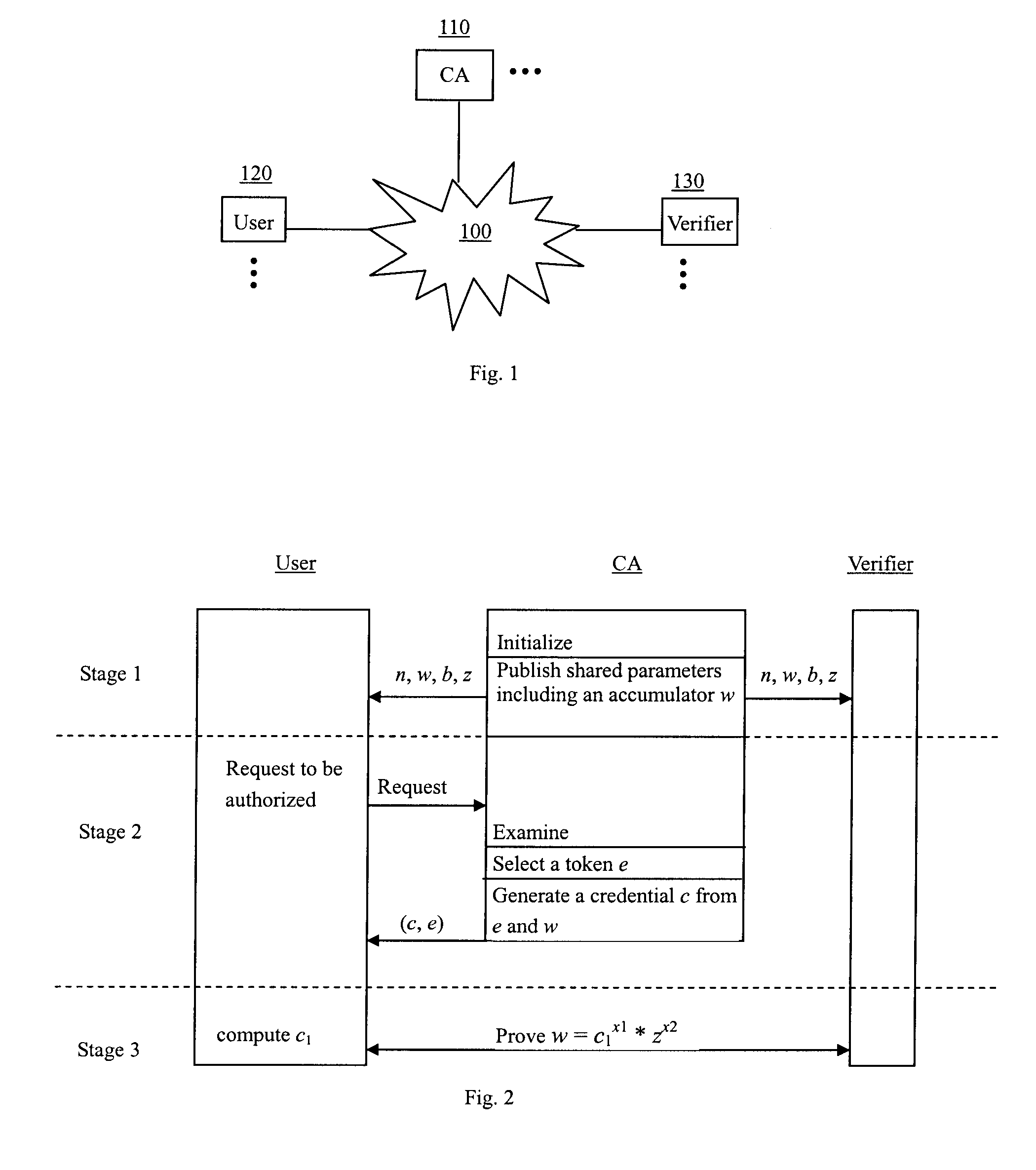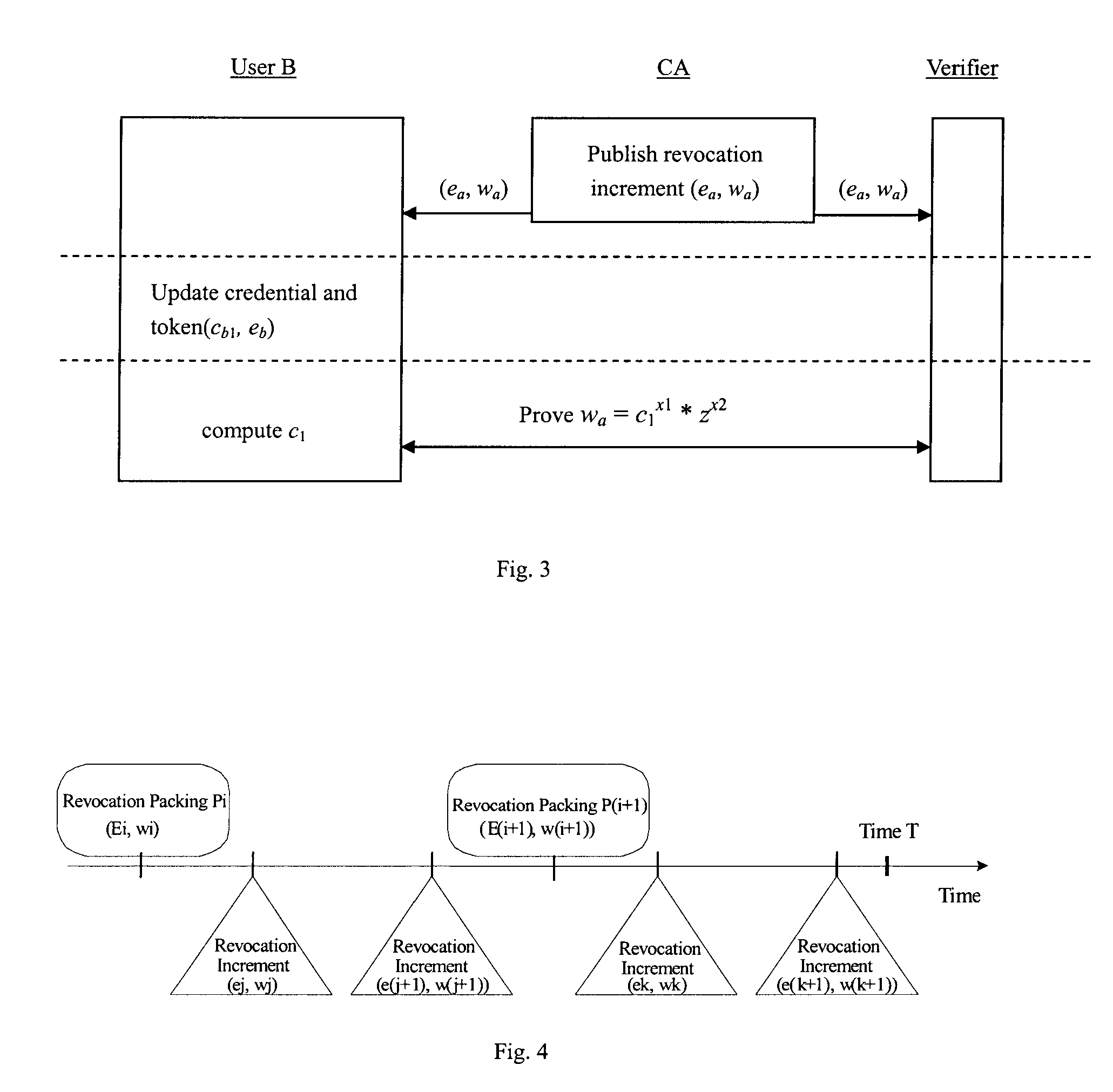User authentication system and method for a communications network
a user authentication and communications network technology, applied in the field of communications networks, can solve the problems of erroneous denial of service by the verifier, the cost of computation and communication is quite high both for the verifier and the credential authority, and the service provider is more vulnerable to denial of service attacks aimed at the credential authority, so as to achieve high efficiency and preserve user privacy in the communications network
- Summary
- Abstract
- Description
- Claims
- Application Information
AI Technical Summary
Benefits of technology
Problems solved by technology
Method used
Image
Examples
Embodiment Construction
[0036] The invention is made in view of the above disadvantages of the prior art.
[0037] With reference to the drawings, preferred embodiments of the invention are described in detail below, by way of example only.
[0038]FIG. 1 is a block diagram showing an example of a communication system, in which three kinds of participants, i.e., credential authority (CA) 110, user 120 and verifier 130, communicate across the network 100.
[0039] The network 100 herein can be any kind of network, including but not limited to any computer communications network or telecommunication network. The user can be any client device suitable to connect to the network, such as a computer, a handheld device, a mobile phone, and so on. The credential authority CA can be a device adapted to connect to the network, which manages the credentials of a service. The verifier can be a host or a terminal that accepts a user's request after correctly authenticating the user.
[0040] In particular, the credential autho...
PUM
 Login to View More
Login to View More Abstract
Description
Claims
Application Information
 Login to View More
Login to View More - R&D
- Intellectual Property
- Life Sciences
- Materials
- Tech Scout
- Unparalleled Data Quality
- Higher Quality Content
- 60% Fewer Hallucinations
Browse by: Latest US Patents, China's latest patents, Technical Efficacy Thesaurus, Application Domain, Technology Topic, Popular Technical Reports.
© 2025 PatSnap. All rights reserved.Legal|Privacy policy|Modern Slavery Act Transparency Statement|Sitemap|About US| Contact US: help@patsnap.com



